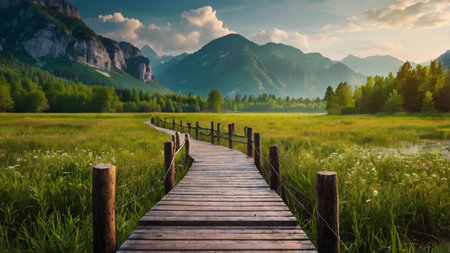1. The Roots of Hiker-Led Environmental Activism
Grassroots environmental movements in the U.S. hiking community have deep and powerful roots. Long before large organizations took up the cause, hikers across America felt a personal responsibility to protect the wild spaces they loved. Their boots-on-the-ground connection to forests, mountains, and trails inspired them to take collective action when those places were threatened.
The Early Days of Hiker Advocacy
In the early 20th century, as Americans began exploring national parks and public lands, hikers started noticing changes—trails eroding, trash left behind, and natural habitats disappearing. Groups like the Sierra Club and Appalachian Mountain Club began not only organizing hikes but also rallying volunteers to maintain trails and speak out for conservation.
How Hikers Connection to the Land Sparked Action
Hikers often describe a deep sense of belonging in nature—a feeling that these landscapes are worth protecting for future generations. This personal bond is what turned ordinary trail users into passionate advocates. Whether it was picking up litter on a favorite path or writing letters to lawmakers about preserving wilderness areas, hikers became a driving force behind grassroots activism.
Key Milestones in Hiker-Led Movements
| Year | Milestone | Impact on Environmental Activism |
|---|---|---|
| 1920s | Sierra Club campaigns for national park protection | Brought hiker voices into public land policy debates |
| 1968 | National Trails System Act passed | Established iconic long-distance trails with hiker input |
| 1987 | Leave No Trace principles developed by hikers | Changed outdoor culture toward stewardship and minimal impact practices |
| 2000s-Present | Local trail groups form across the U.S. | Empowered communities to care for nearby natural spaces through volunteer work and advocacy |
The Power of Community-Driven Change
Unlike top-down environmental campaigns, hiker-led movements thrive on community collaboration and shared values. Trail maintenance days, educational workshops, and social media groups help connect people who care about the same places. By working together, hikers show that anyone can make a difference in protecting Americas great outdoors.
2. Key Organizations and Milestones
Sierra Club: Pioneers in Grassroots Advocacy
Founded in 1892 by legendary hiker and conservationist John Muir, the Sierra Club is one of the most influential grassroots environmental organizations in the United States. What started as a small group of hikers dedicated to protecting California’s Sierra Nevada has grown into a nationwide movement with millions of members. The club has played a key role in advocating for the creation of national parks, preserving wilderness areas, and influencing environmental policy through community action and public education.
Major Achievements
| Milestone | Year | Impact |
|---|---|---|
| Yosemite National Park Campaign | 1890s-1900s | Helped establish Yosemite as a protected park, setting a precedent for future conservation efforts. |
| Wilderness Act Support | 1964 | Advocated for the passage of landmark legislation safeguarding over 9 million acres of federal land. |
| Beyond Coal Campaign | 2010s-present | Pushed for clean energy alternatives and helped retire hundreds of coal plants across the U.S. |
Appalachian Trail Conservancy: Protecting America’s Footpath
The Appalachian Trail Conservancy (ATC) was founded in 1925 by a coalition of hikers, planners, and volunteers passionate about creating and maintaining the iconic Appalachian Trail (A.T.). Spanning over 2,190 miles from Georgia to Maine, the A.T. is not only a hiker’s dream but also a symbol of collaborative environmental stewardship. The ATC coordinates thousands of volunteers who maintain the trail and protect its surrounding ecosystems.
Major Achievements
- Trail Completion (1937): Successfully connected all sections to create a continuous footpath from Georgia to Maine.
- Lands Protection Program: Secured protection for over 250,000 acres along the trail corridor to preserve natural habitats and scenic vistas.
- Volunteer Engagement: Mobilizes around 6,000 volunteers annually for trail maintenance, monitoring, and education programs.
Local Trail Stewardship Organizations: Making an Impact on the Ground
Apart from national giants like Sierra Club and ATC, countless local groups led by hikers play crucial roles in grassroots conservation efforts. These organizations focus on trail maintenance, habitat restoration, educational outreach, and community engagement at the regional or state level. They often collaborate with larger networks while addressing unique local needs.
Examples of Local Hiker-Led Groups & Their Focus Areas
| Organization Name | Main Region/Trail | Main Achievement/Impact |
|---|---|---|
| PCTA (Pacific Crest Trail Association) | California/Oregon/Washington – Pacific Crest Trail | Maintains over 2,650 miles of trail; advocates for land protection and responsible recreation. |
| Maine Appalachian Trail Club (MATC) | Maine – Appalachian Trail Segment | Keeps remote sections accessible; preserves fragile alpine ecosystems. |
| Boulder County Trail Crew | Boulder County, Colorado – Local Trails Network | Carries out erosion control projects; organizes youth engagement days for trail stewardship. |
| Tennessee Eastman Hiking & Canoeing Club (TEHCC) | Tennessee/Virginia – Appalachian Trail Section & Waterways | Merges hiking with waterway cleanups; builds new footbridges for safer access. |
The grassroots spirit among U.S. hikers continues to inspire new generations to care for wild spaces. Through these organizations and their milestones, hiker-led groups have made lasting impacts on both local communities and the broader American landscape.

3. Leave No Trace Ethos and Trail Stewardship
The Leave No Trace (LNT) principles are at the heart of grassroots environmental movements among U.S. hikers. These guidelines, first developed in the 1980s, were quickly adopted by hiking communities across America. Today, they’re more than just rules—they’re a shared code that shapes how outdoor enthusiasts behave and care for wild places.
How Hikers Champion Leave No Trace
American hikers have embraced Leave No Trace as a personal and group responsibility. Local hiking clubs and nationwide organizations like the Appalachian Trail Conservancy and Pacific Crest Trail Association run workshops, lead cleanup hikes, and spread LNT messages through social media. This hands-on approach turns every hiker into a steward of the land.
Core Principles of Leave No Trace
| LNT Principle | Real-World Practice on U.S. Trails |
|---|---|
| Plan Ahead & Prepare | Researching trail conditions, packing out trash bags, knowing local regulations |
| Travel & Camp on Durable Surfaces | Sticking to marked trails and campsites to prevent erosion |
| Dispose of Waste Properly | Packing out all trash, including food scraps and toilet paper |
| Leave What You Find | Avoiding picking wildflowers or disturbing historical artifacts |
| Minimize Campfire Impact | Using camp stoves or established fire rings; never leaving fires unattended |
| Respect Wildlife | Observing animals from a distance and storing food securely |
| Be Considerate of Other Visitors | Keeping noise down and yielding the trail when appropriate |
The Impact on Conservation Culture
The ripple effect of Leave No Trace goes far beyond individual hikes. By championing these principles, U.S. hikers have fostered a broader conservation culture. Many join volunteer trail maintenance days or advocate for public lands protection at city council meetings and online campaigns. Their grassroots activism ensures that America’s trails remain wild, beautiful, and accessible for future generations.
4. Advocacy in Action: Trail Protection and Public Lands Policy
How Hikers Drive Change from the Ground Up
Across the United States, hikers have become powerful grassroots advocates for protecting natural spaces. Their deep connection to trails and public lands inspires them to step up as stewards—often leading local movements that have national impact. From letter-writing campaigns to hands-on trail work, hikers show that anyone with a love for nature can make a difference.
Protecting Trails through Grassroots Efforts
Many hiking groups organize volunteer crews to repair eroded paths, clean up litter, and restore habitats. These on-the-ground actions help keep trails accessible for everyone while protecting fragile ecosystems. Local clubs often partner with land managers like the National Park Service or U.S. Forest Service, providing thousands of volunteer hours each year.
Common Trail Stewardship Activities
| Activity | Purpose |
|---|---|
| Trail Maintenance | Repairing erosion, clearing fallen trees, fixing signage |
| Litter Cleanups | Removing trash to protect wildlife and water sources |
| Habitat Restoration | Planting native species, removing invasive plants |
| Wildlife Monitoring | Tracking animal populations to inform conservation efforts |
Advocacy for Public Lands Policy
Hikers also get involved in policy advocacy at local, state, and federal levels. They write letters to lawmakers, attend public hearings, and organize rallies to support bills that protect public lands from development or privatization. Groups like the American Hiking Society empower individuals to raise their voices through annual events like Hike the Hill in Washington, D.C.
Key Issues Addressed by Hiking Advocates
- Preserving access to public lands for recreation and conservation
- Pushing for funding for trail maintenance and park infrastructure
- Tackling trail erosion by promoting sustainable trail design
- Supporting wildlife corridors and habitat restoration projects
- Raising awareness about Leave No Trace principles among new hikers
The Power of Community Collaboration
The success of these grassroots movements comes from collaboration. Hikers connect with local businesses, environmental groups, schools, and even outdoor brands to amplify their message. Whether it’s organizing a community hike or launching a petition online, every action helps ensure America’s trails remain wild and welcoming for generations to come.
5. The Future: Community Engagement and Youth Involvement
As grassroots environmental movements led by U.S. hikers continue to grow, their future depends on community engagement and inspiring the next generation. Today’s hiking groups know that protecting trails and wild spaces isn’t just about picking up trash or maintaining paths—it’s about building a lasting culture of stewardship that welcomes everyone.
Expanding Outreach and Inclusion
Modern hiking organizations are making a strong effort to reach communities that have traditionally been left out of outdoor activities. Many groups partner with local schools, urban youth programs, and cultural organizations to introduce new people to the outdoors. This not only diversifies the movement but also brings fresh perspectives and energy to conservation work.
Common Outreach Efforts by U.S. Hiking Groups
| Outreach Strategy | Example |
|---|---|
| School Partnerships | Hosting field trips and outdoor classes for students |
| Youth Leadership Programs | Training high schoolers as “Trail Ambassadors” |
| Cultural Events | Organizing hikes during Black History Month or Pride Month |
| Urban Trail Days | Bringing nature experiences to city neighborhoods |
Nurturing the Next Generation of Stewards
The future of these grassroots movements relies on young people stepping into leadership roles. Across the country, organizations like the American Hiking Society and Latino Outdoors run mentorships, internships, and youth-focused trail crews. They help teens and college students build skills in trail maintenance, advocacy, and public speaking—preparing them to lead tomorrow’s environmental efforts.
How Young Hikers Make a Difference
- Organizing local cleanups and restoration projects
- Speaking at city council meetings about park funding
- Using social media to raise awareness about Leave No Trace ethics
- Connecting peers with opportunities to volunteer on public lands
The Road Ahead: Building Stronger Communities Through Hiking
The evolution of these grassroots efforts is ongoing. As U.S. hikers become more diverse and interconnected, their environmental movements are better equipped to tackle challenges like climate change, access issues, and habitat protection. By focusing on outreach, inclusion, and youth involvement, these groups are shaping a more sustainable future for both trails and the people who love them.


